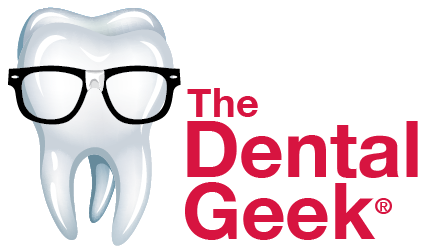What Dental Patients Fear the Most
The high-pitched whine of a dental drill can cause chills down the spines of most people. This coupled by the head-shaking vibration of the drill and the anticipation of a shot is what usually creates anxiety with dental procedures.
Historically dental researchers have searched for options to control the drill noise, and vibration, from air abrasion that works like a sandblaster to the recent development of electric drills. Topical anesthetic gels have dulled the needle pinch, but still, the sight of a needle coming towards your face instills anxiety in many people.
Since the 1990s laser dentistry using the Fotona LightWalker Erbium:YAG lasers has created a huge change in treatment options. We have chosen this wavelength because of its high absorption, and stable hardware history and support.
The Erbium laser beam is concentrated light of a specific wavelength that is absorbed in water molecules. Tooth enamel and dentin contain high levels of water in their structure. The laser energy photons interact with the water molecules and remove microscopic bits of tooth structure with virtually no pain or discomfort for most people.
Adults and children respond well to the treatment, all they hear is a mild popping sound and a cool water spray, with no drill vibration. For those that treat special needs children and adults, the lack of noise is a benefit and helps management of these patients. The laser also helps to reduce bacteria in the tooth structure and helps prevent leakage and recurrent cavities under new fillings. The Erbium laser creates a surface on the tooth that enables high levels of adhesion of the commonly used “cosmetic”, “white” filling materials of today. One downside is that the lasers of today cannot cut out old amalgam or the silver/mercury fillings so that a dental drill must be used, unless they are small and we can cut around them with the laser.
In some cases where the tooth is sensitive some injected anesthetic may be necessary. We are currently doing clinical testing of a laser procedure to produce temporary “numbing” in many cases without injections or side effects. The results are promising and are currently being used in our practice. You can visit our practices web page at www.Boyntonlaserdental.com for more information.

After trying all of the tools mentioned above I’ve come to realize that fear of dentistry is best managed by kind words and true concern on the part of the dentist and dental team. Taking time to introduce the patient to the practice in a way that is not inimidating will go along way to controlling fear. In over 40 years I have never had a patient whose fear of dentistry could not be managed by real concern on the part of the dental team. Tools are great but they will never replace the personal touch.
yea I do agree that most patients hates the drill part during the treatment.
Thanks for sharing. I’ve found that ear plugs for younger patients can be the easiest fix for dampening ths sound of the drill.
Hearing the dental drill can be unpleasant. Luckily, the tools that are used during dental procedures have come a long way! Using lasers such as these will become increasingly common over the next few years.
Sounds like a good alternative to the loud noise of drills. This especially would be good for kids, who tend to be really freaked out by the sound and vibration. Thanks for sharing this!
I agree with what you stated in your article. Also, scraping of teeth to remove plague can be unpleasant to some guests and they can be very sensitive about this.
Sometimes ear plugs are not enough for some children and they will still throw a fit.
It’s the scraping and pressure that does it for most of our patients.
I wish my dentist had this technology!
Tooth loss results in a number of changes in the appearance and function of a smile. Even the loss of one or a few teeth can have a significant impact on how the smile appears. Depending on the location of the missing teeth, the way a person speaks will also be affected; tooth loss can result to a lisp and difficulties in clear speech.
To read more click here: http://largearticle.com/dental-implants-for-smile-gaps/
Nice boss.It help me lot. Thank you very much.